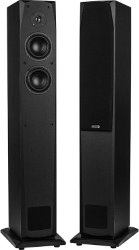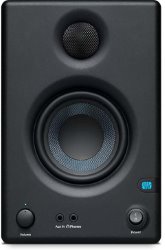Dayton Audio MK442T vs. Presonus Eris E3.5
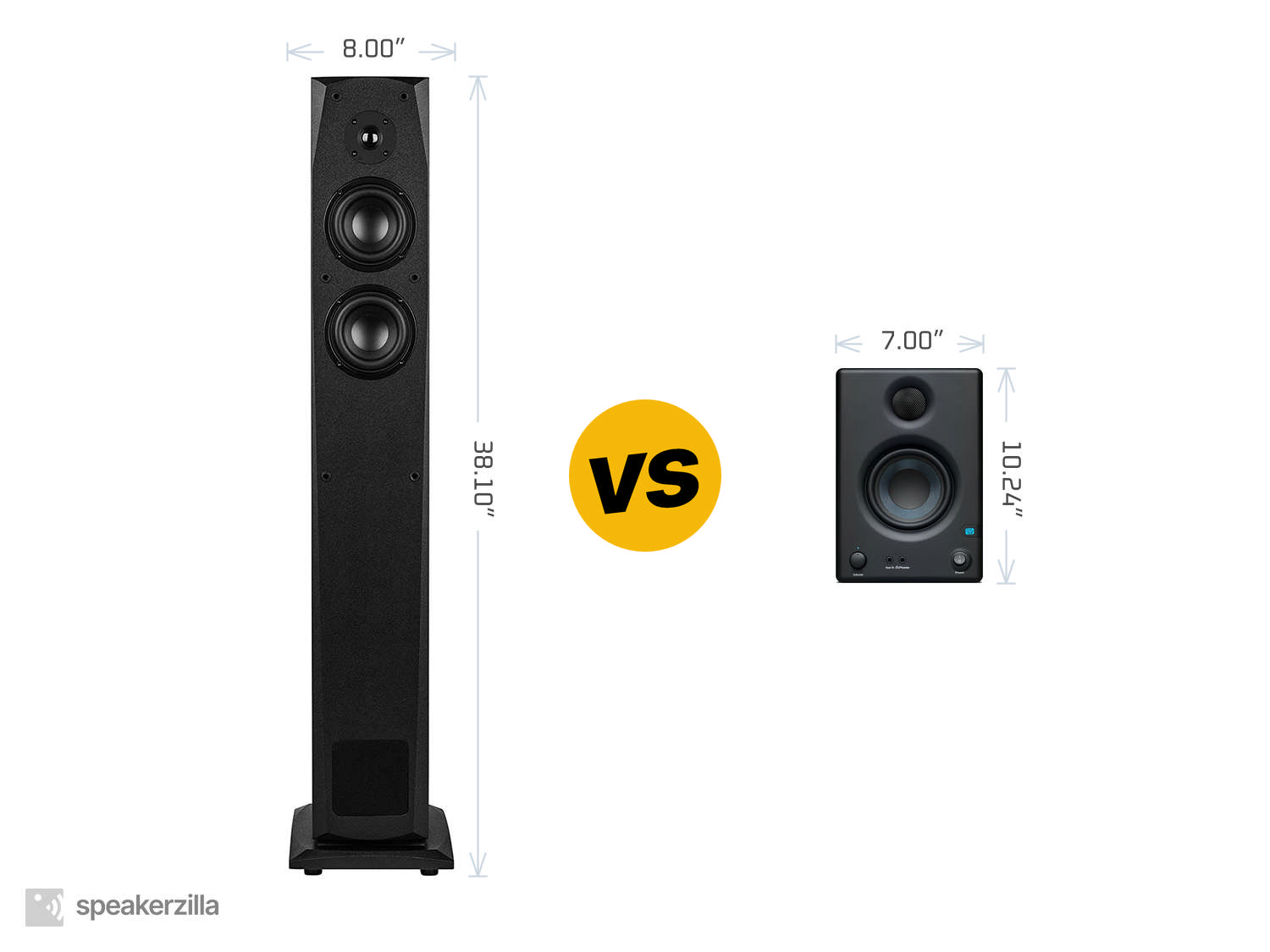
| Dayton Audio MK442T Tower Speakers | Presonus Eris E3.5 3.5” Near Field Studio Monitor |
| MSRP | |
| $355 | $100 |
| Dimensions (H × W × D) | |
|
38.10” × 8.00” × 12.00” 968mm × 203mm × 305mm |
10.24” × 7.00” × 7.68” 260mm × 178mm × 195mm |
| Power Type | |
| Passive | Powered |
| Frequency Response | |
| 40-20,000 Hz | 80-20,000 Hz |
| ASR Score | |
| n/a | 1.5 |
| ASR Score w/Subwoofer | |
| n/a | 4.3 |
|
Amazon.com
|
Amazon.com
|
Key Takeaways
TLDR Summary: In the realm of budget-conscious audiophiles, the Dayton Audio MK442T towers present a compelling value with their slim, floor-standing design and dynamic soundstage, well-suited for medium to large rooms. Meanwhile, the Presonus Eris E3.5 monitors offer a compact form factor and a neutral sound signature, catering to users with limited space or those seeking accuracy for content creation. The MK442T's emphasize depth and presence, while the Eris E3.5 focuses on clarity and flat response, making the choice between them a matter of intended use and personal preference in listening environments.
Speaker Comparison
When we talk about aural pleasure, the tools that deliver it are as varied as the tastes of those who seek it. In the corners of the audiophile world, the Dayton Audio MK442T tower speakers stand tall — both literally and figuratively — offering a budget-conscious path to high-fidelity sound. In contrast, the PreSonus Eris E3.5 near field studio monitors are compact soldiers, designed to offer precision and neutrality for the burgeoning producer or an audio enthusiast with limited space. Comparing these two could be likened to a debate between a seasoned theater actor and a method-trained silver screen star — both are performers, but their stages and styles differ dramatically.
Design and Build
The Dayton Audio MK442T speakers are a sight to behold with their sleek, black, tower design that commands presence in any room. Standing just over 30 inches tall, these speakers are meant to be a stationary fixture in a listener's audio setup. Their dual 4-inch woofers and 3/4-inch dome tweeter allow for a broad sound stage and engaging listening experience. On the other hand, the PreSonus Eris E3.5 monitors are compact, with a utilitarian aesthetic that speaks to their studio monitor lineage. These speakers are built for the desk or console — a professional tool for those who seek to create as much as they consume.
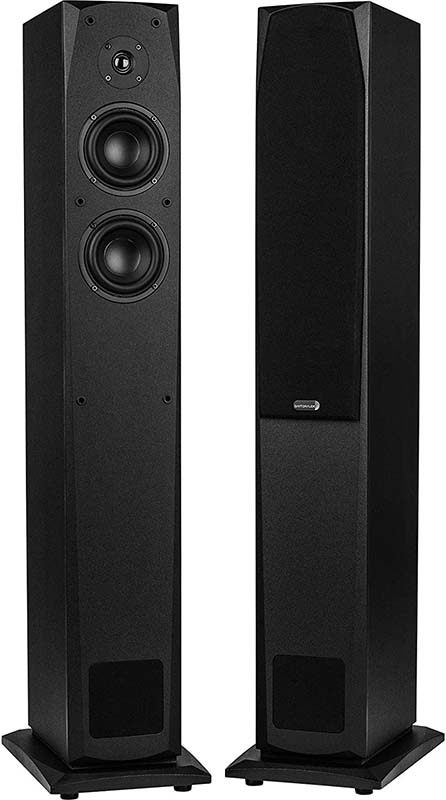
 (at Amazon.com)
(at Amazon.com)Sound Quality
Sound quality is where things get interesting. The MK442Ts, with their transmission line design, offer an impressive bass response that is unexpected at their price point. The mids are warm and inviting, while the highs are crisp without being piercing. They are speakers that favor the enthusiast wanting to fill a room with sound that’s both rich and expansive. In the world of the Eris E3.5, accuracy is the name of the game. These monitors provide a flat frequency response, crucial for making critical mix decisions in music production. The E3.5s are less about the warmth or depth of sound and more about presenting audio as it is, warts and all.
Connectivity and Versatility
The MK442Ts, being passive speakers, require an external amplifier or receiver to bring them to life. This requirement might be seen as a drawback for those seeking simplicity, but it also allows for a greater degree of customization in one's audio setup. The Eris E3.5 monitors, meanwhile, are self-powered, with built-in amplification. They offer a variety of inputs — RCA, TRS, and even a front auxiliary input — making them ready to play nice with virtually any audio source right out of the box. Their versatility is their strength, serving equally well for gaming, multimedia production, or simply enjoying music.
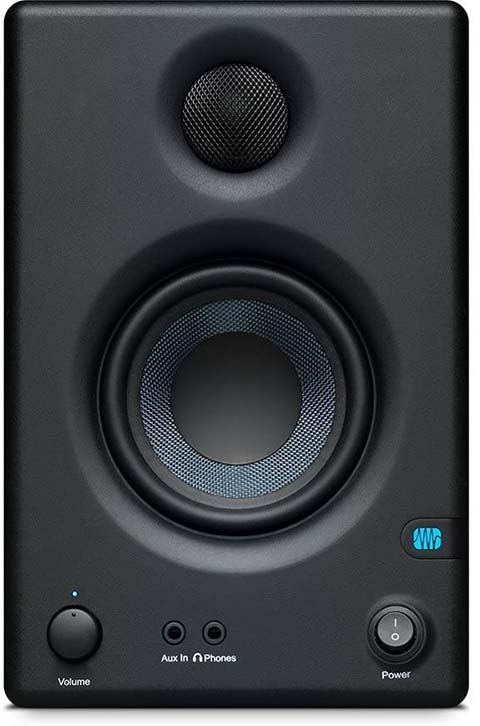
 (at Amazon.com)
(at Amazon.com)As we delve deeper into the nuances of each speaker, one thing becomes clear: these are tools built for different purposes. The Dayton Audio MK442T towers are part of a traditional hi-fi lineage, designed to offer a pleasing sound that one can sit back and enjoy for hours. The Presonus Eris E3.5, by contrast, offers the precision required for audio production, allowing musicians and producers to hear every detail of their work with unflinching accuracy. This makes the E3.5s excellent for those seeking to refine their craft, but perhaps less ideal for those who just want to relax into their favorite tunes.
Compare to similar speakers
Value is another factor that cannot be ignored. Dayton Audio has managed to pack an incredible amount of performance into an affordable package with the MK442T speakers. They represent a remarkable value for the casual listener or the audiophile on a budget. The PreSonus Eris E3.5 monitors, while not the cheapest option in their category, still offer a lot of bang for the buck, especially for those who require the flat response and detailed soundstage they provide.
In conclusion, choosing between the Dayton Audio MK442T tower speakers and the PreSonus Eris E3.5 monitors comes down to understanding one’s own needs and preferences. If your desire is to be enveloped in a musical experience, to feel the rumble of bass and the sparkle of high notes with a touch of warmth, the MK442Ts could very well be your next audio companions. However, if your world revolves around creating, mixing, and producing music, where every sonic detail is critical, the Eris E3.5s stand ready to be your ears in the studio. Both sets of speakers excel in their respective arenas, and therein lies the beauty of choice in the diverse landscape of audio gear.
- Dayton Audio MK442T reviews and FAQs
- Presonus Eris E3.5 reviews and FAQs
Check Current Prices: |
|
|
Amazon.com
|
Amazon.com
|
Affiliate Disclosure: As an Amazon Associate, we earn from qualifying purchases.
